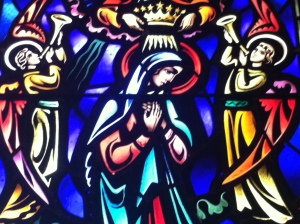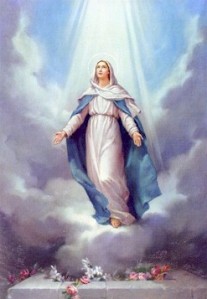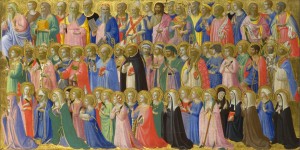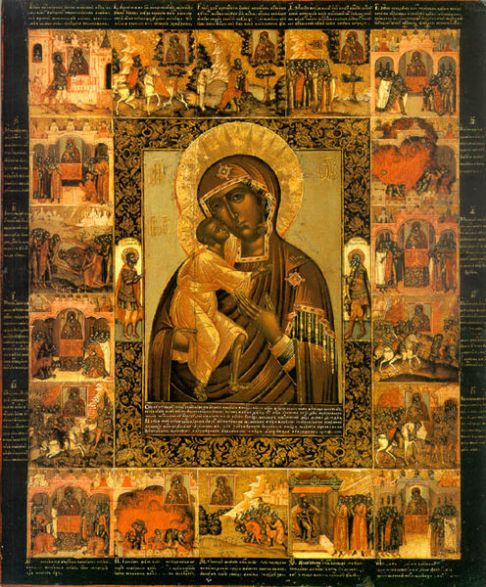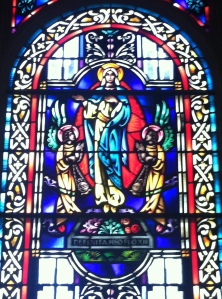
The Assumption of the Blessed Virgin Mary, celebrated on August 15 is a solemnity in the life of the Church. You may remember that a solemnity is our most important type of feast. In the dioceses of the United States, it is a Holy Day of obligation. More that you just “have to go” to Mass, you should want to go to Mass. Do we really have that much else to do that we cannot find a Mass to go to today? Mary is the example of perfect obedience and trust in God, and we could do well always to learn from her example.
For those that pray the rosary regularly, when you get to this mystery, you might say, “the Assumption of the Blessed Virgin Mary, body and soul into heaven.” The Assumption is not simply celebrating that Mary went to heaven. (Of course she did!) Let’s look at what the Catechism teaches in this regard:
“Finally the Immaculate Virgin, preserved free from all stain of original sin, when the course of her earthly life was finished, was taken up body and soul into heavenly glory, and exalted by the Lord as Queen over all things, so that she might be the more fully conformed to her Son, the Lord of lords and conqueror of sin and death.” (CCC 966)
Mary’s assumption into heaven is a foreshadowing of our life in heaven to come, hopefully the resurrection of all Christians. We can point to scriptural evidence to support this belief. Some key places are chapter 12 of the book of Revelation, Genesis 3:15, Corinthians 15:54, other letters of Paul, and Psalm 132 as evidence of Mary’s victory over sin and death. Here is verse 8 of Psalm 132: “Arise, O Lord, into thy resting place: thou and the ark, which thou hast sanctified.” The Church understands the ark of the New Covenant to be Mary, taken body and soul to her resting place.
The Assumption is a dogma of the Catholic Church, proclaimed in 1950 by Pope Pius XII in the Apostolic Constitution Munificentissimus Deus. However, there is much evidence of this belief from as early as the third and fourth centuries, and it was celebrated by Christians as early as the fifth century.
Mary, Queen of Heaven, pray for us.
*As a side note, I am blessed to be in a parish under the patronage of our Blessed Mother. The above image is one of our stained glass windows (I apologize for the quality, taking them on my phone). The first image is the window depicting the Assumption, so you will note the inscription “Definita 1950 Pio XII.” The image below is a portion of the window depicting the crowning of Mary, Queen of Heaven and Earth.
